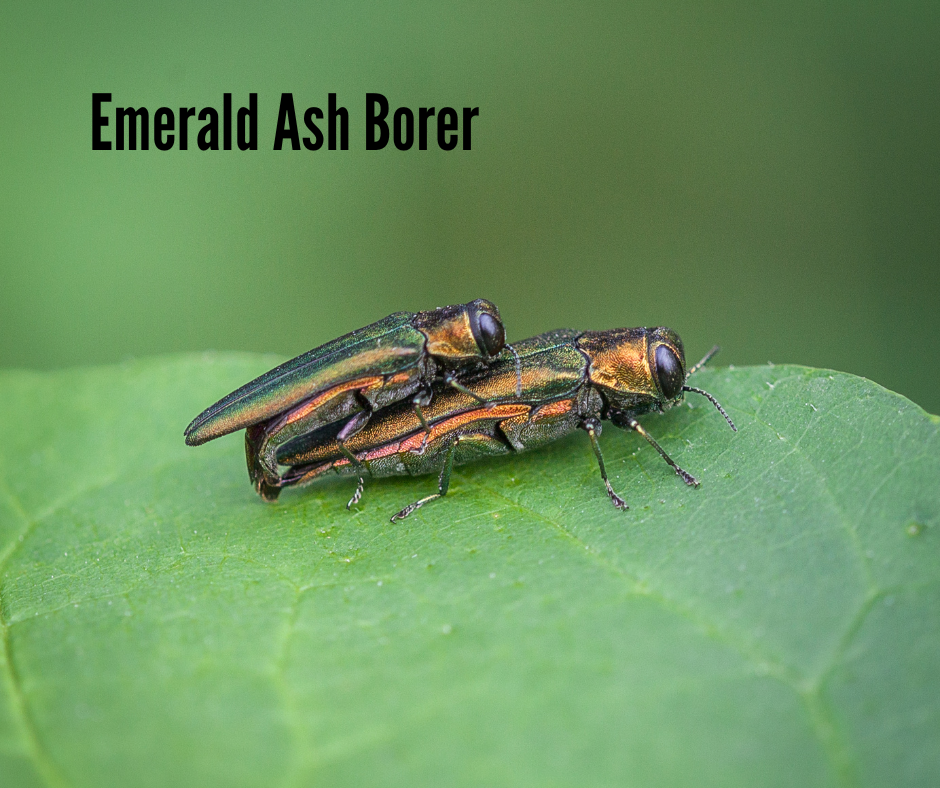Symptoms of the Emerald Ash Borer
go.ncsu.edu/readext?1008033
en Español / em Português
El inglés es el idioma de control de esta página. En la medida en que haya algún conflicto entre la traducción al inglés y la traducción, el inglés prevalece.
Al hacer clic en el enlace de traducción se activa un servicio de traducción gratuito para convertir la página al español. Al igual que con cualquier traducción por Internet, la conversión no es sensible al contexto y puede que no traduzca el texto en su significado original. NC State Extension no garantiza la exactitud del texto traducido. Por favor, tenga en cuenta que algunas aplicaciones y/o servicios pueden no funcionar como se espera cuando se traducen.
Português
Inglês é o idioma de controle desta página. Na medida que haja algum conflito entre o texto original em Inglês e a tradução, o Inglês prevalece.
Ao clicar no link de tradução, um serviço gratuito de tradução será ativado para converter a página para o Português. Como em qualquer tradução pela internet, a conversão não é sensivel ao contexto e pode não ocorrer a tradução para o significado orginal. O serviço de Extensão da Carolina do Norte (NC State Extension) não garante a exatidão do texto traduzido. Por favor, observe que algumas funções ou serviços podem não funcionar como esperado após a tradução.
English
English is the controlling language of this page. To the extent there is any conflict between the English text and the translation, English controls.
Clicking on the translation link activates a free translation service to convert the page to Spanish. As with any Internet translation, the conversion is not context-sensitive and may not translate the text to its original meaning. NC State Extension does not guarantee the accuracy of the translated text. Please note that some applications and/or services may not function as expected when translated.
Collapse ▲An insect that feeds on trees and shrubs that maybe isn’t so big, but it can cause a big problem is the Emerald Ash Borer (EAB). This insect is not native to the United States and it has caused a lot of damage to ash trees from Michigan and Pennsylvania all the way down into Craven County. With it being this close, it would be a good idea to keep an eye out for trees that might be infested with this beetle.

Emerald Ash Borer
The EAB can kill ash tree or our native white fringe tree (Chionanthus virginicus) in a matter of a couple of years, once the symptoms are observed. The symptoms include the thinning of the canopy and an observable ‘D’ shaped exit hole. There are chemicals that can be used to treat a tree that is infested, but it takes a couple of years for the tree to recover.
The spread of the EAB can be slowed by people NOT moving ash wood from inside the quarantine area to outside. If firewood is purchased inside the quarantine area it’s best to either burn it all or leave it where it was purchased so the insects that may be inside the wood aren’t moved long distances. When in doubt, leave it where it is.
If you suspect EAB might be in an ash tree on your property, take pictures, make note of the location and contact the county forest ranger who can confirm the infestation. Don’t collect samples and transport them to another area for confirmation of infestation unless specifically requested.




